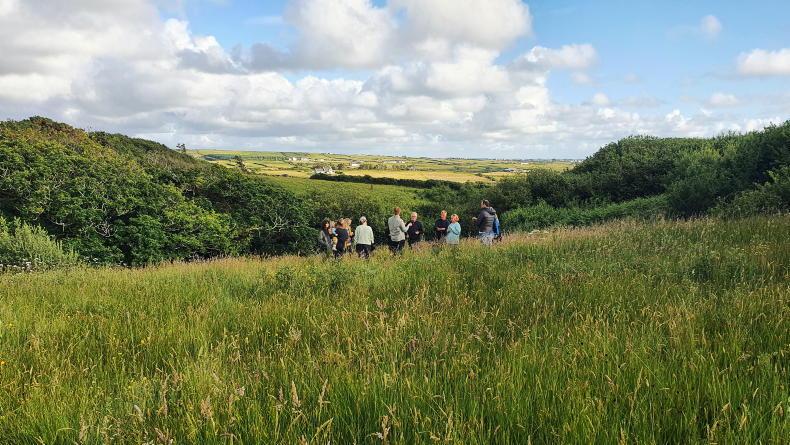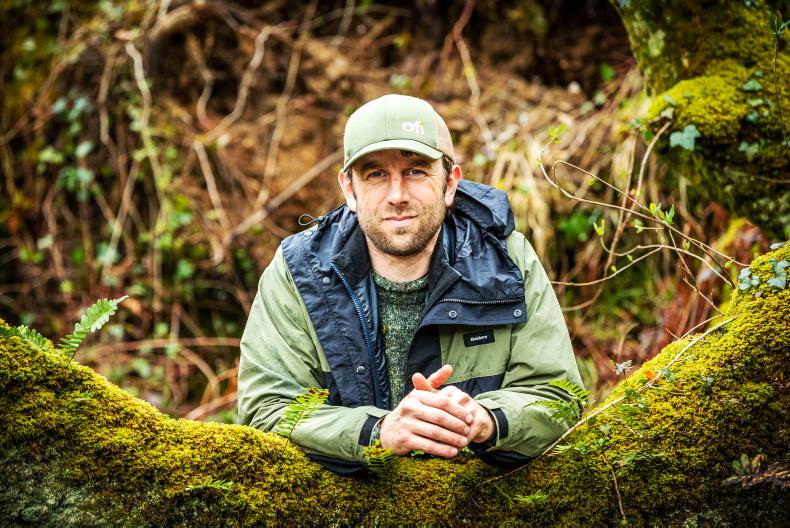Getting the 2023-2027 Forestry Programme over the line was a significant achievement for Pippa Hackett’s department.
When it came to the forestry portfolio, the coalition had received the mother of all hospital passes. Years of mismanagement and negligence at the highest levels left the system on the edge of collapse.
Pressure from environmental non-governmental organisation (ENGOs), activists and regional anti-forestry groups had been steadily building from around 2015.
A damning 2018 European Court of Justice judgment regarding the State’s lack of proper assessment was the final straw.
The licensing system ground to a halt, planting rates collapsed, and ash was left to rot in the fields. Forestry’s key stakeholder, the farmer, checked out
In the face of this crisis, and relentless criticism, the Government persisted. In October 2023, they delivered a historic €1.3bn package.
There is a huge amount riding on this forestry programme.
Aside from keeping an entire land use sector afloat, there are two additional hurdles it must clear in order to succeed.
Firstly, it must deliver on carbon sequestration targets as outlined in Ireland’s climate strategy. If it fails on this front, other sectors will have to work harder.
Secondly, it must do so without contributing further to ecological decline, a traditional Achilles’ heel of Irish forestry. Below, we outline what is required.
1. Put the money where it is needed, at the time it’s needed there
While the €1.3bn is impressive, its spending is almost entirely dependent on landowners holding licences. Not only are licences very difficult to get, in many instances, they are not being applied for. The first focus must be generating a solid pipeline of licence applications and issuances.
Multiple studies have shown that money is just one part of the equation for farmers considering forestry
The State must acknowledge that forestry, a land use already viewed with some scepticism, has suffered major reputational damage.
The increased premiums alone will not change that.

Ray Ó Foghlú says that objective information and support need to be provided at farm level.
Multiple studies have shown that money is just one part of the equation for farmers considering forestry. Spending now must go on rebuilding confidence and rehabilitating the system.
2. A system fit for purpose
The current system is hugely complex and getting more so. This complexity favours institutional investors but turns farmers off.
On every farm, there will come a point in time where long-term land use options are being considered. This could be due to poor health, death, inheritance, etc.

The real conversations need to be had in farmyards, marts and community halls across the country.
Forestry, particularly native forestry, is often on the table. If the system responded efficiently to applications or enquiries, this moment could be captured.
Instead, applications fall into an abyss of bureaucracy.
While there, competing land use options (long-term lease, agri-environment schemes, etc) move in, and the window of opportunity closes for another decade, or even a generation.
A new system, easy to interact with, and with a statutory commitment to decision-making timelines is urgently needed now.
3. Remove unnecessary barriers and costs
Not only is the system now more complex than ever but it is also increasingly expensive for farmers to engage with.
Through no fault of forestry companies, landowners are now being asked to pay site visit fees, licence application fees and ecology report fees, all with no guarantee of success.
This is a new departure from previous programmes and needs to be urgently addressed.
4. Real communication
Restoring faith in forestry will not be done by adverts on the radio or in the newspaper.
The real conversations need to be had in farmyards, marts and community halls across the country.
The messaging needs to be objective and delivered by trusted voices. To date, this work has mostly been left to foresters and forestry companies.

Ray O'Foghlú.
This type of meaningful engagement is not particularly expensive and yet it remains underfunded.
The second iteration of the Forestry Promotion Scheme released last year was oversubscribed. Many applicants got rejections or had to scale back their plans.
5. Advisers are the key
Farmers have long-standing relationships with their advisers. They trust them. To me, it’s bizarre that those same advisers (Teagasc and private) are not an integral element of this strategic national land use ambition.
This needn’t be a major undertaking for an already overworked group.
They just need enough information so as to be able to flag where the new schemes can fit into a farm’s system.
Technical follow-up can happen with Teagasc’s forestry advisers.
For farmers looking to trees for legacy, biodiversity, or additional income, it’s daft to refuse on such spurious grounds as commercial productivity
Currently, there are just eight specialist advisers and they don’t have the capacity to meet demand.
Doubling or tripling their numbers would be a fraction of the total budget.
6. Deregulation is not the answer
Representatives from the forestry industry have indicated that new ecological conditions will see afforestation targets not met.
Easing these is not an option, as it would undermine one of the key tests for the programme – the protection of biodiversity.
While deregulation should be off the table, making sensible changes to land eligibility where ecologically appropriate should not. There are scenarios in the programme that simply don’t stack up.
I covered these in a recent article about forestry in the uplands. People with species-poor, mineral soils in exposed, elevated or coastal sites are being declined permission to create native woodlands due to productivity concerns.
For farmers looking to trees for legacy, biodiversity, or additional income, it’s daft to refuse on such spurious grounds as commercial productivity.
There is an argument that reforms such as those mentioned could be best delivered by a new built-for-purpose forestry development agency.
Given our forests are the only natural resource without it, I am increasingly sympathetic to this argument.
Getting the 2023-2027 Forestry Programme over the line was a significant achievement for Pippa Hackett’s department.
When it came to the forestry portfolio, the coalition had received the mother of all hospital passes. Years of mismanagement and negligence at the highest levels left the system on the edge of collapse.
Pressure from environmental non-governmental organisation (ENGOs), activists and regional anti-forestry groups had been steadily building from around 2015.
A damning 2018 European Court of Justice judgment regarding the State’s lack of proper assessment was the final straw.
The licensing system ground to a halt, planting rates collapsed, and ash was left to rot in the fields. Forestry’s key stakeholder, the farmer, checked out
In the face of this crisis, and relentless criticism, the Government persisted. In October 2023, they delivered a historic €1.3bn package.
There is a huge amount riding on this forestry programme.
Aside from keeping an entire land use sector afloat, there are two additional hurdles it must clear in order to succeed.
Firstly, it must deliver on carbon sequestration targets as outlined in Ireland’s climate strategy. If it fails on this front, other sectors will have to work harder.
Secondly, it must do so without contributing further to ecological decline, a traditional Achilles’ heel of Irish forestry. Below, we outline what is required.
1. Put the money where it is needed, at the time it’s needed there
While the €1.3bn is impressive, its spending is almost entirely dependent on landowners holding licences. Not only are licences very difficult to get, in many instances, they are not being applied for. The first focus must be generating a solid pipeline of licence applications and issuances.
Multiple studies have shown that money is just one part of the equation for farmers considering forestry
The State must acknowledge that forestry, a land use already viewed with some scepticism, has suffered major reputational damage.
The increased premiums alone will not change that.

Ray Ó Foghlú says that objective information and support need to be provided at farm level.
Multiple studies have shown that money is just one part of the equation for farmers considering forestry. Spending now must go on rebuilding confidence and rehabilitating the system.
2. A system fit for purpose
The current system is hugely complex and getting more so. This complexity favours institutional investors but turns farmers off.
On every farm, there will come a point in time where long-term land use options are being considered. This could be due to poor health, death, inheritance, etc.

The real conversations need to be had in farmyards, marts and community halls across the country.
Forestry, particularly native forestry, is often on the table. If the system responded efficiently to applications or enquiries, this moment could be captured.
Instead, applications fall into an abyss of bureaucracy.
While there, competing land use options (long-term lease, agri-environment schemes, etc) move in, and the window of opportunity closes for another decade, or even a generation.
A new system, easy to interact with, and with a statutory commitment to decision-making timelines is urgently needed now.
3. Remove unnecessary barriers and costs
Not only is the system now more complex than ever but it is also increasingly expensive for farmers to engage with.
Through no fault of forestry companies, landowners are now being asked to pay site visit fees, licence application fees and ecology report fees, all with no guarantee of success.
This is a new departure from previous programmes and needs to be urgently addressed.
4. Real communication
Restoring faith in forestry will not be done by adverts on the radio or in the newspaper.
The real conversations need to be had in farmyards, marts and community halls across the country.
The messaging needs to be objective and delivered by trusted voices. To date, this work has mostly been left to foresters and forestry companies.

Ray O'Foghlú.
This type of meaningful engagement is not particularly expensive and yet it remains underfunded.
The second iteration of the Forestry Promotion Scheme released last year was oversubscribed. Many applicants got rejections or had to scale back their plans.
5. Advisers are the key
Farmers have long-standing relationships with their advisers. They trust them. To me, it’s bizarre that those same advisers (Teagasc and private) are not an integral element of this strategic national land use ambition.
This needn’t be a major undertaking for an already overworked group.
They just need enough information so as to be able to flag where the new schemes can fit into a farm’s system.
Technical follow-up can happen with Teagasc’s forestry advisers.
For farmers looking to trees for legacy, biodiversity, or additional income, it’s daft to refuse on such spurious grounds as commercial productivity
Currently, there are just eight specialist advisers and they don’t have the capacity to meet demand.
Doubling or tripling their numbers would be a fraction of the total budget.
6. Deregulation is not the answer
Representatives from the forestry industry have indicated that new ecological conditions will see afforestation targets not met.
Easing these is not an option, as it would undermine one of the key tests for the programme – the protection of biodiversity.
While deregulation should be off the table, making sensible changes to land eligibility where ecologically appropriate should not. There are scenarios in the programme that simply don’t stack up.
I covered these in a recent article about forestry in the uplands. People with species-poor, mineral soils in exposed, elevated or coastal sites are being declined permission to create native woodlands due to productivity concerns.
For farmers looking to trees for legacy, biodiversity, or additional income, it’s daft to refuse on such spurious grounds as commercial productivity.
There is an argument that reforms such as those mentioned could be best delivered by a new built-for-purpose forestry development agency.
Given our forests are the only natural resource without it, I am increasingly sympathetic to this argument.









 This is a subscriber-only article
This is a subscriber-only article









SHARING OPTIONS: